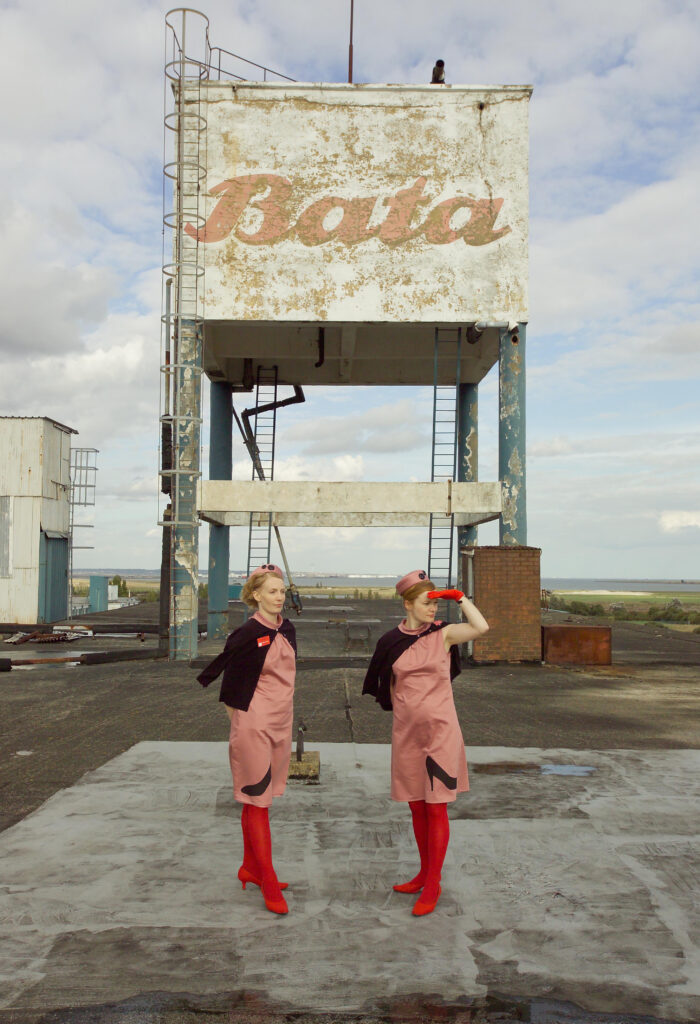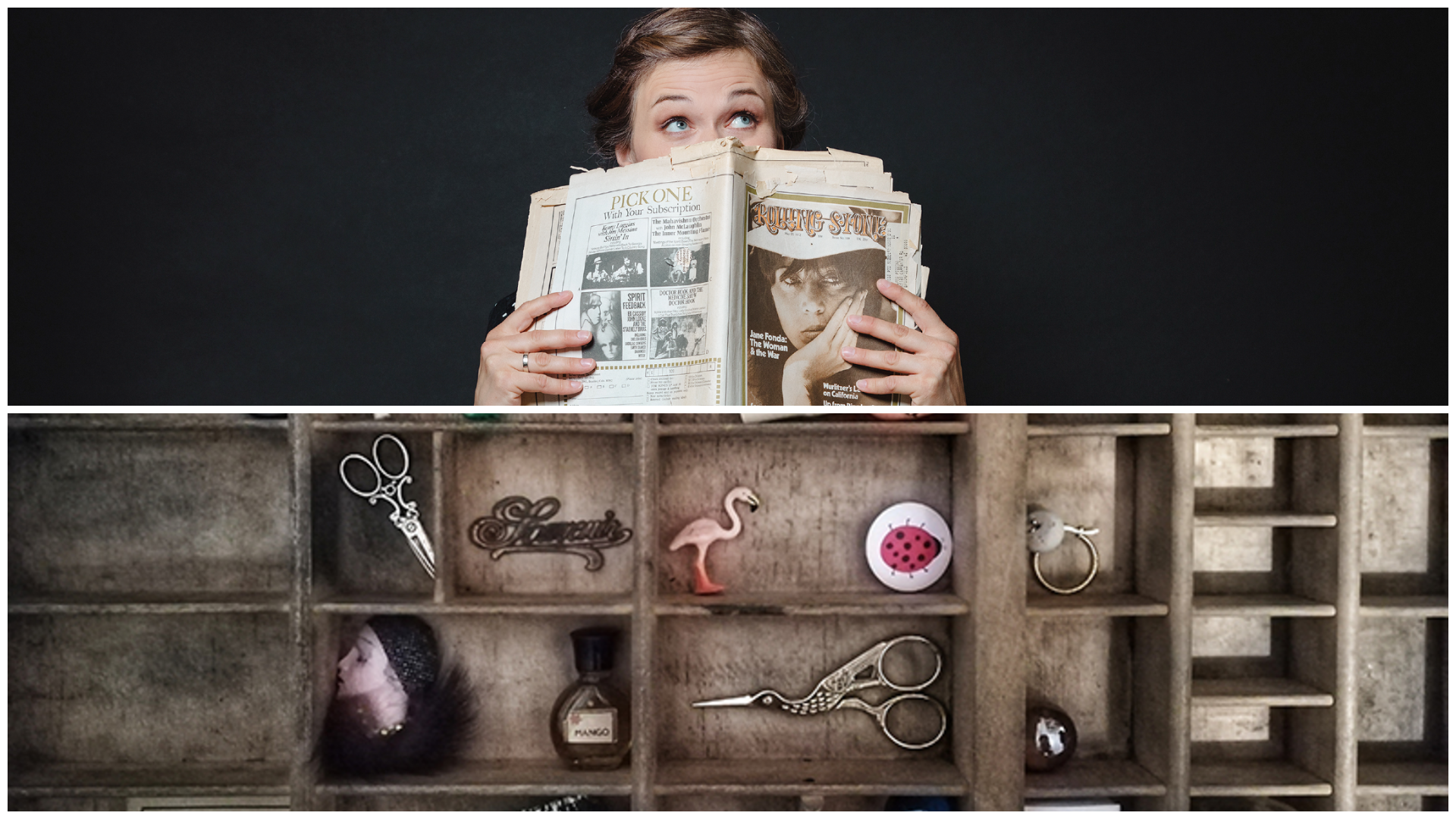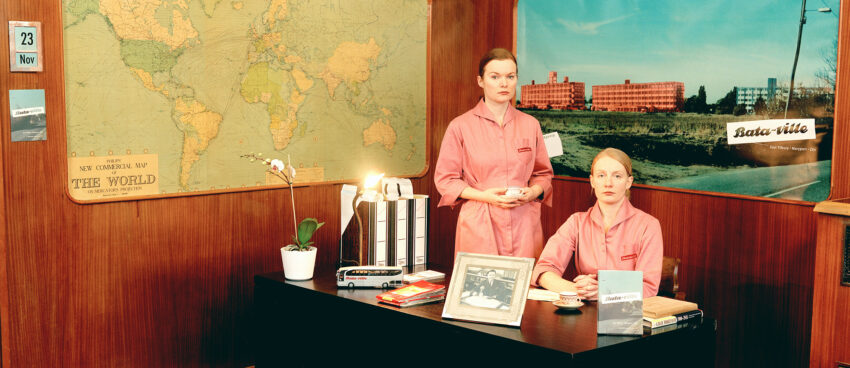“We are not afraid of the future” proclaimed Tomáš Baťa, founder of the shoe empire founded in 1894, laying the foundation for a Bata philosophy that encompassed all areas of his workers’ lives. The performative road movie “Bata-ville” by the British artist duo Somewhere follows Baťa´s footsteps to Zlin in the Czech Republic together with workers from the now closed UK Bata factories in East Tilbury and Maryport. I spoke to Nina Pope from Somewhere about this road trip, which, although 20 years ago, is more topical than ever, an ambivalent search for traces between conformity, individuality and fears for the future.
What was your starting point for “Bata-ville”?
Karen and I initiated a site-specific art project for the town of East Tilbury. It could have been on any theme. We focused on the influence of the Bata shoe company. East Tilbury was Bata’s production site in the UK, alongside Maryport. It’s important to note that Bata towns all over the world have a similar look: The functionalist architecture of the factory and administration buildings as well as the factory housing estates for workers and employees is particularly striking. Furthermore, the Bata company philosophy encompassed the entire life of the workers and employees. This created an ambivalence between surveillance and a good, secure life. On the other hand, the company emphasized and valued creativity and innovative approaches. Founder Baťa initiated a wide range of facilities for workers and employees. “Work collectively, live individually” was an essential core message. We were interested in unpicking what this company philosophy meant to people.
The road trip took you to the origins of Baťa in Zlin in the Czech Republic…
Exactly, but that was the second step. In East Tilbury, we first installed a “travel agency” as a performative art project in which we recruited people interested in our bus trip. Many former employees of the East Tilbury and Maryport factories were interested. But also a group of ‘others’ – people interested in the Bata story. We wore stewardess costumes, based on ones worn by Bata employees who used to lead trips around the factory for visitors. The trip was free for anyone interested, but you had to apply. We also asked all participants to think about what contribution they could make to the community during the bus trip.
Then the journey began in the yellow bus with the title “We are not afraid of the future” …
During the making of the film, the Bata factory in East Tilbury ceased production, giving this phrase even more meaning for many of those affected. Many of the factory’s original workers had moved to East Tilbury from poor parts of London or other parts of the country. Thanks to Bata, a thriving town had been created here that made a good life possible. Now much had changed. During the trip, some of the participants gave us a very deep and personal insight into their lives and their approach to Bata. That was very touching. As was the realization that many of the workers really enjoyed working for Bata and had a close relationship with the company.
What was important to you on the trip?
Karen and I did a lot of research into and about Bata, both for the travel agency project in East Tilbury and for the preparations for the bus trip. However, we deliberately didn’t go to Zlin beforehand. We wanted to be open to impressions and moods on the trip and to see it for the first time with the other passengers. We also didn’t want the film to be a Bata history documentary. We thought about a few spots that we wanted to visit with the participants on the bus trip, such as Tomáš Baťa’s grave, the Bata Museum or individual buildings in the city of Zlin. Our aim was to get to the bottom of the phenomenon and the spirit of Bata by traveling together and talking to the participants.
Are you afraid of the future?
In view of the great challenges of our time, I don’t think you can’t be afraid of the future. But what I find almost more worrying at this point is how much this question has changed in such a short time. When we were working on the project, the fears were more in the individual sphere of the respondents. Today, this has completely shifted and fears about the future affect us all. But to use Baťa´s saying here too: “Think and work constructively!” (laughs).
Somewhere are Nina Pope and Karen Guthrie. They met at Edinburgh College of Art before completing MAs in London and began working together in 1995. Their early work was already characterized by technological innovation combined with a socially engaged, playful and inclusive sensibility. They discovered film with “Bata-ville” and other film projects followed.
https://www.somewhere.org.uk
Bata Facts
Tomáš Baťa, regarded as the Henry Ford of Eastern Europe, founded the Bata shoe factory in the Czech town of Zlin in 1894. After a visit to Massachusetts in the USA, the center of machine shoe production at the time, Tomáš Baťa converted his factory to machines and revolutionized shoe production in Europe. From 1909, he exported to Europe as well as North America, Asia and North Africa.
The rapidly growing company expanded internationally from 1930 and rose to become the world market leader after surviving the global economic crisis.
Baťa had its own housing estates and department stores built around the factories for the workers. These were in very isolated locations. He provided schooling and welfare facilities. The company was known for its close supervision of workers not only in the factory, but also in everyday life.
Source: Bata (company) – Wikipedia (German Version)
Bildredit Beitrags-Header: © Chris Clunn
Link:
Film “Bata-ville”: https://www.somewhere.org.uk/shop/


